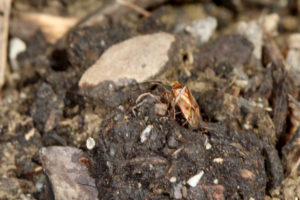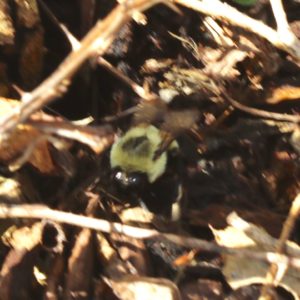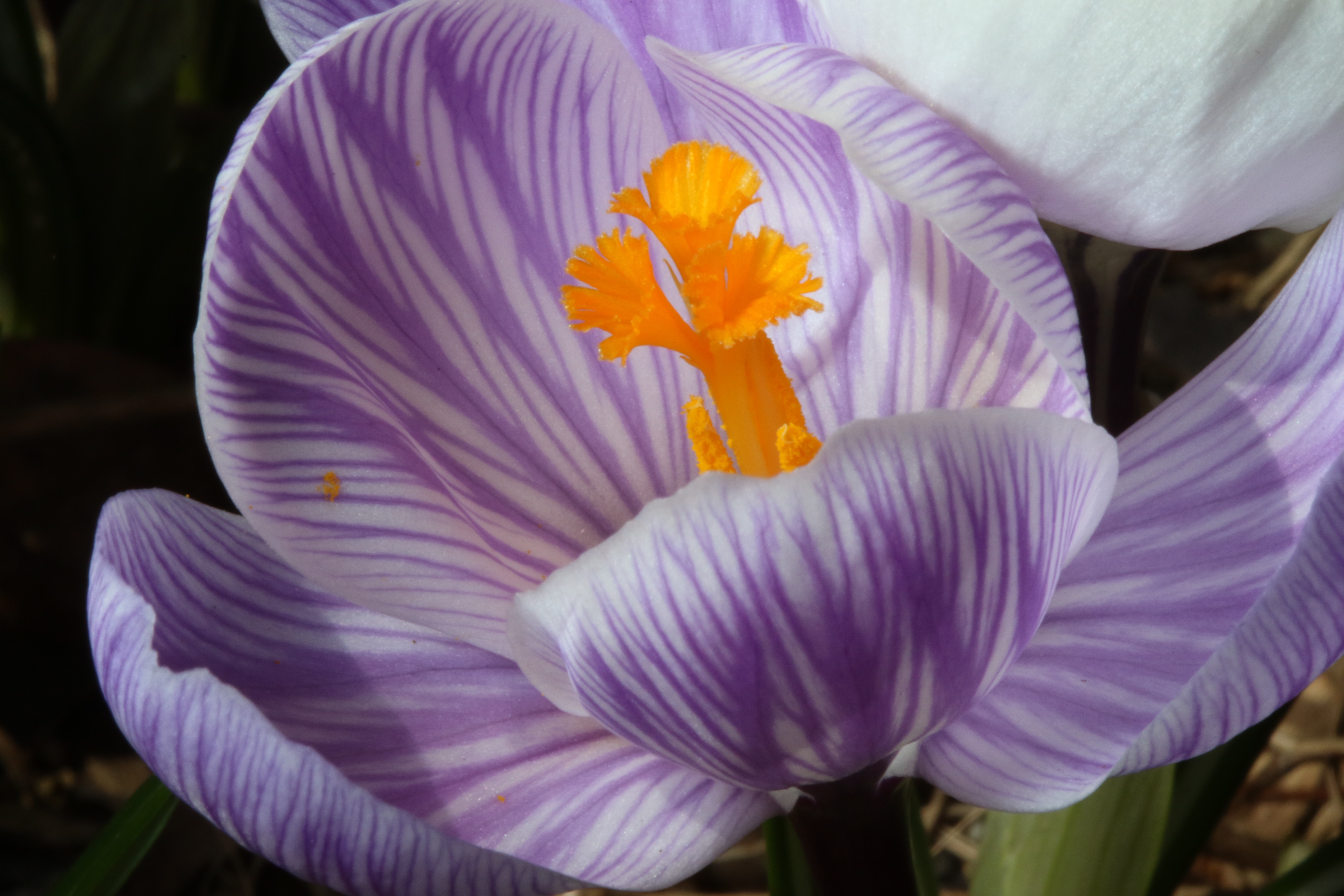It’s late April and Spring has already reached many places, but it’s just getting to us here in Maine. In fact yesterday was one of the first really nice, warm days. There’s still snow in some spots, but everything is springing to life. People are coming out of their houses (putting away their skis) and getting back into the streets, parks and gardens. I spent a little time in my backyard yesterday, and I thought I’d give a tour of the insects I found crawling out from under rocks, literally and metaphorically.

The first bugs in my backyard to grab my attention this weekend were dozens of newly emerging mining bees. The furry little Andrena females were everywhere in the slightly sandy soil of our garden beds. They seems to like the area where we’d grow tomatoes last year, although I’m not sure if there’s any connection or just a coincidence there. These solitary bees were clearly a bit groggy from having spent the last six months underground. They’d take little test flights, circling six inches above ground and come back to warm in the sun. Occasionally they’d tussle with one another when they blundered into their neighbors, before one would fly off, indignantly.

Along side the mining bees, was this true bug. He was much faster, so I didn’t get as good a look at him, but my guess is that he’s a member of the genus Lygus which has several species in North America. They’re pests of fruit, where they leave those unsightly spots. However, this guy didn’t overwinter in the ground, like the mining bees. Mirid bugs prefer to spend winter under weeds and dry grass, just below the snow.

Last summer paper wasps, Polistes dominula, has made a nest right above our garage door, which always made me a little nervous. Thankfully, the wasps seems used to the door opening and closing, and they never gave us any trouble. Paper wasps are social insects, where most of the females are sterile workers, and late in the summer a few new queens are produced. These new queens leave the nest, find a male, and overwinter to start a new colony. As fall turned to winter, I felt a bit sad for the few remaining workers at our garage door. They stayed with their nest until the frost killed them.
So I was happy to see a new nest of Polistes dominula had taken up residence in a concrete-block column in our garden. Who knows? These might even be the daughters and nieces of the wasps by our garage last summer. And the garden is a much better place for them, where they can hunt flies and caterpillars without us bothering them!

Bumblebees are some of the first insects to emerge in spring. Their large, furry bodies make them well adapted to the cold. They can also burn fat to vibrate their muscles and warm themselves. I had seen a few passing through our garden in the last weeks — Spring is a though time for bumblebees, since they have to start finding flowers immediately to get some food — but I hadn’t made a confirmed sighting until yesterday. This big common eastern bumblebee is a newly emerged queen. She visited our crocus flowers and snooped around the ground a bit looking for a potential nesting sight. If she’s lucky, she’ll find a good spot, like a dry old mole tunnel and start raising a brood of workers. Then she’ll have a colony similar to the life cycle of the paper wasps. But for strictly vegetarian pollinators like her, flowers and the nectar they provide are the only way to survive.
Let’s hope it’s a good Spring!




